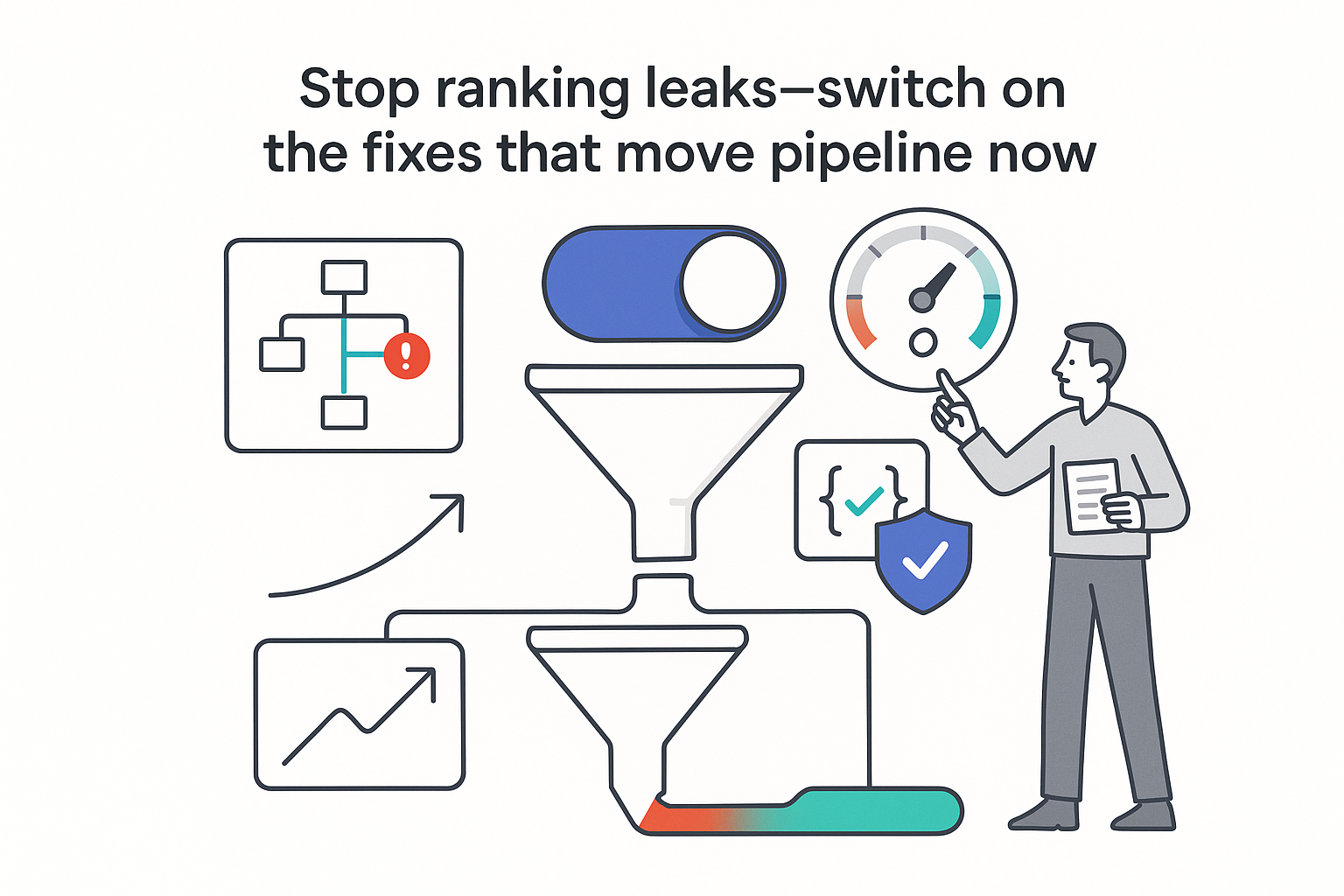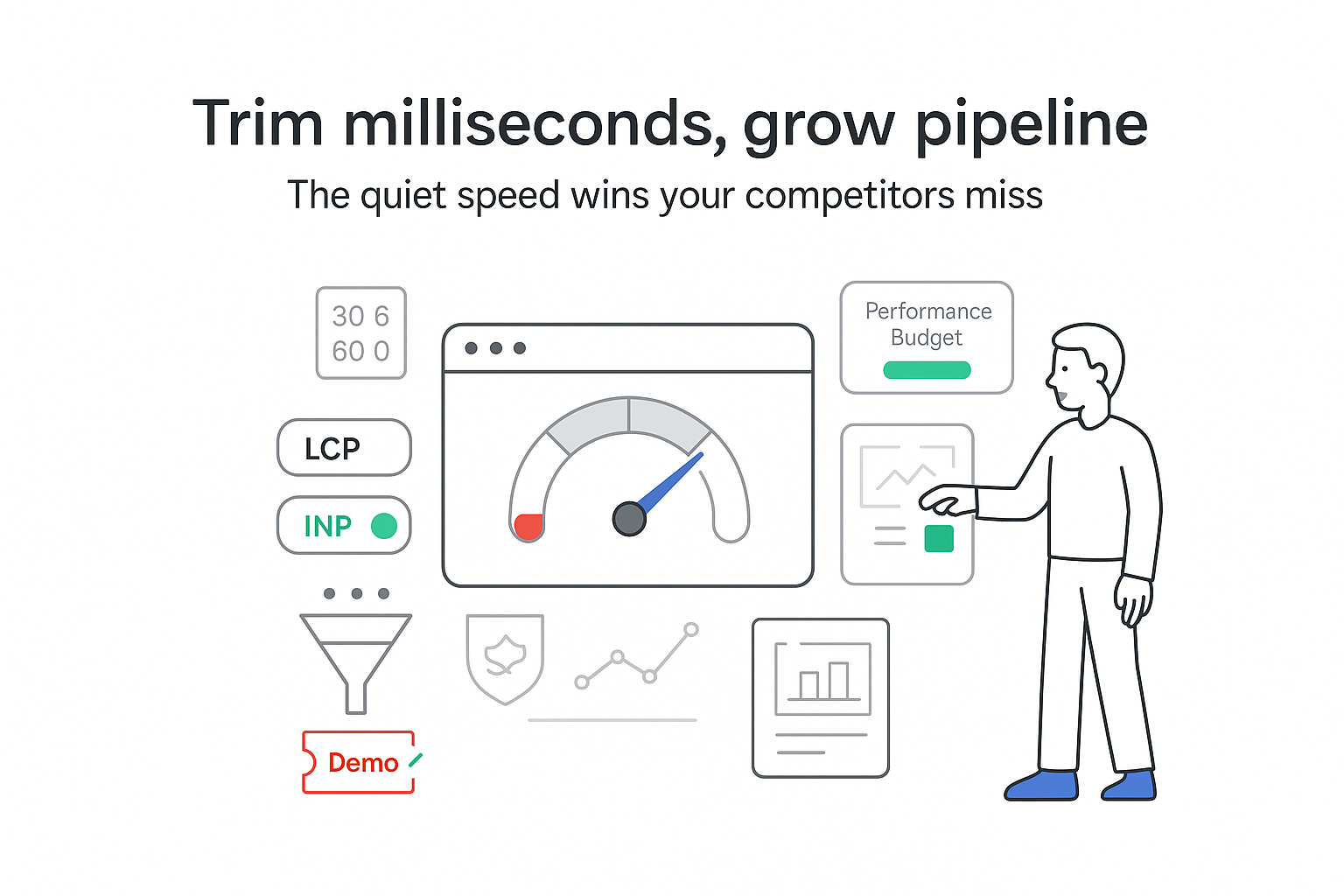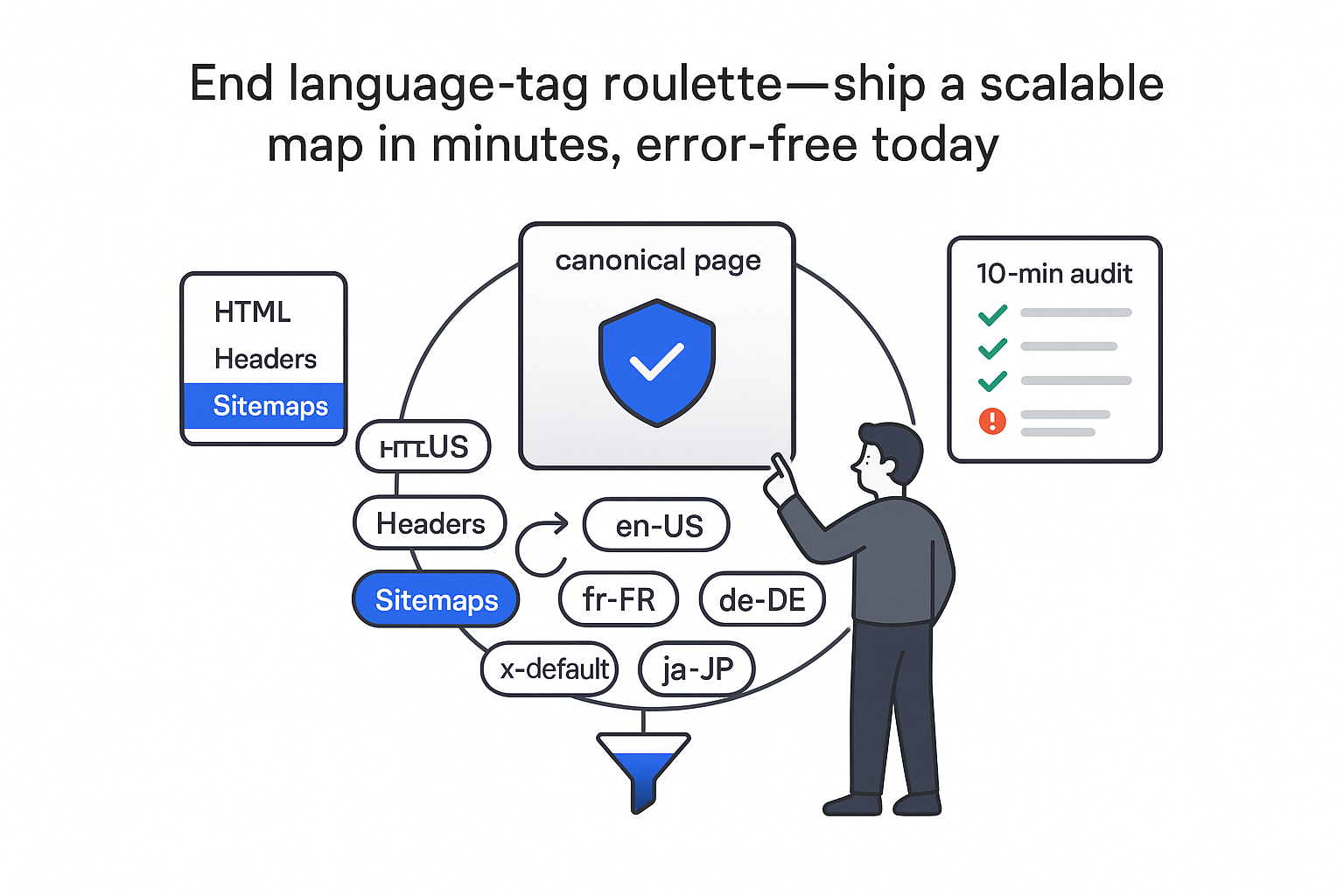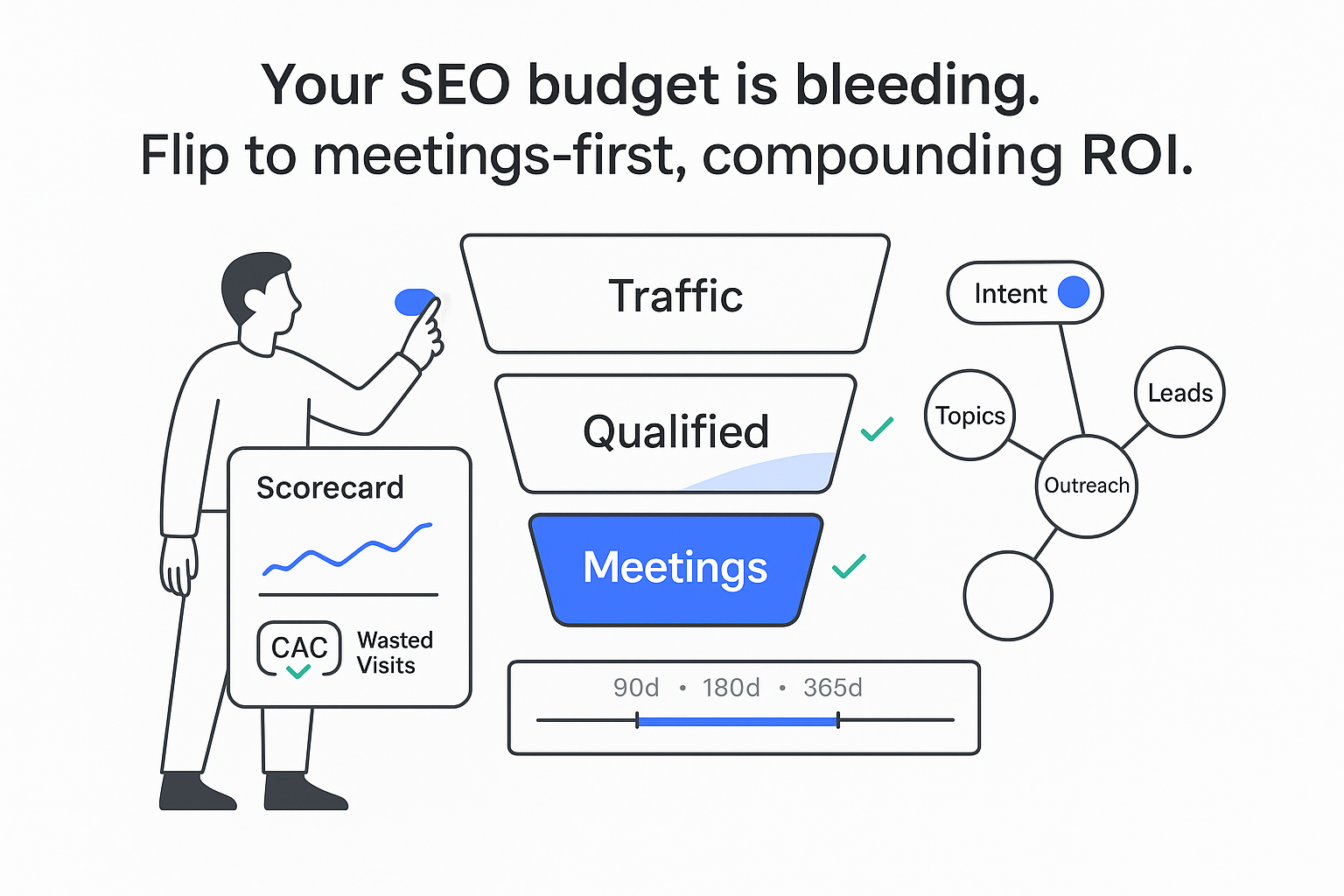Why a B2B SEO audit matters
If you sell to other businesses, your site is more than a brochure. I treat it as a quiet, always-on sales rep that either builds pipeline or stalls it. A well-run B2B SEO audit shows what to fix first, what can wait, and how those changes move the needle on demos, proposals, and booked revenue. No fluff - just clear actions tied to outcomes executives care about.
B2B SEO audit priorities
A practical set of priorities keeps me focused and moving. I group the work by impact and complexity so quick wins land in 30-60 days while foundational items compound over time. I start where the bottleneck is loudest: if traffic is fine but demos lag, I fix conversion paths; if rankings are thin, I focus on content and technical basics; if analytics is noisy, I shore up measurement before I judge performance.
Quick wins I can typically ship in 30-60 days:
- Fix crawl blockers and submit a clean XML sitemap: check robots rules, noindex on key URLs, orphaned pages, and broken internal links; remove legacy or staging URLs.
- Improve Core Web Vitals at the template level: compress images, defer non-critical scripts, preload above-the-fold CSS; target LCP under 2.5s with stable CLS and responsive input.
- Consolidate redirects and enforce HTTPS with a single hop.
- Refresh top landing pages: sharpen headlines around buyer pain and outcomes; map one primary query per page; resolve cannibalization.
- Align H1s and titles; prune duplicates; iterate meta descriptions for pages with low CTR.
- Add concise FAQs that remove hesitation and use appropriate structured data.
- Strengthen internal links from authoritative pages to priority services; create focused hubs that point to bottom-of-funnel content.
- Shorten demo forms and clarify CTA hierarchy: one primary action in the hero, with a secondary option that supports self-education.
- Verify analytics and attribution: define key events (for example, demo start/submit), segment branded vs. non-branded, and confirm CRM ties back to landing pages.
Foundational items take longer but multiply results: flatten site architecture so important pages sit within three clicks; audit canonicalization across parameters, pagination, and trailing slashes; build topic maps per service line that cover problems, solutions, comparisons, objections, implementation, and ROI; plan durable hub-and-spoke internal linking; add structured data (Organization, Service, FAQ, Review) where it fits; run light log-file spot checks to see what search bots actually crawl; create intent-matched resources for each stage; and document a KPI baseline before changes to track 30/60/90-day movement.
What a B2B SEO audit is (and how it differs from retail)
I define a B2B SEO audit as a structured review of how a site earns qualified traffic and converts it into pipeline. I check the plumbing under the hood, the messaging on the page, the signals search engines read, and the paths real buyers use to book time with Sales. A solid audit produces a prioritized plan with estimated impact and effort, a KPI baseline (impressions, non-branded clicks, demo requests, SQLs, pipeline), a short risk list, and a simple timeline for expected movement.
B2B brings a few twists: sales cycles are longer and multi-touch, so I watch assisted conversions and sequence, not just last-click wins. Lead quality beats raw volume; a smaller pool of high-fit accounts is better than a flood of unqualified leads. Core pages are service and resource pages, not product detail pages, so messaging earns outsized weight. Conversions often hinge on forms, chat, and calendar events, where field friction matters.
As a directional example, after reducing crawl waste and rewriting five service pages for a mid-market software company, non-branded clicks rose about 40% in 60 days and demo volume increased roughly 30% without extra paid spend. The lift came from cleaner indexing and clearer outcomes on the page. Results vary, but this aligns with widely published guidance: meeting Core Web Vitals thresholds and clarifying value propositions tend to improve conversion rates.
How a B2B SEO audit improves revenue
Each finding should map to a business metric a board cares about. I translate issues into commercial impact so the plan defends itself.
From issue to impact:
- Crawl and indexing waste to visibility: if search engines miss or distrust core pages, impressions never materialize; clean indexing expands eligible reach.
- Messaging to SQL rate: pages written in buyers’ words about pains and outcomes turn more form fills into meetings and Sales Qualified Opportunities.
- Speed and stability to demo requests: faster, more stable pages reduce bounce and increase form starts, especially on mobile.
- Structured data to SERP CTR: rich results attract the right clicks and lower dependency on paid for core topics.
- Content gaps to ACV: covering late-stage topics (implementation, integrations, ROI, comparisons) attracts larger, stickier accounts.
Short examples to show causality: a data platform compressed hero media and deferred third-party scripts, dropped Largest Contentful Paint below 2.5s, and saw demo starts rise 19% in three weeks. An IT services firm reframed service pages around outcomes and added proof blocks; organic form-to-SQL rate moved from 31% to 44% in two months. An industrial SaaS added comparison pages and structured data; high-intent CTR climbed 26% and organic-sourced pipeline grew 33% in a quarter.
How to perform a B2B SEO audit
- Discovery and goal setting: I gather ICPs, top markets, core use cases, sales-cycle length, and the stories reps tell on calls. I align on targets for demos, SQLs, and pipeline tied to organic so every decision supports a clear outcome.
- Data foundation: I confirm analytics and search data capture the full path, verify key events, export 6-12 months of history, segment branded vs. non-branded, and choose an attribution model that fits the sales motion.
- Technical crawl: I scan status codes, directives, canonicalization, pagination, and internationalization; verify sitemaps and robots rules; assess Core Web Vitals with both field and lab data; and review a small server-log sample to see what bots actually hit.
- On-page and content analysis: I evaluate titles, H1s, headings, and copy for intent match; map one primary query per page; identify cannibalization; build topic maps per service; and list late-stage content gaps buyers actually search for (pricing, integration, migration, ROI).
- Conversion path review: I walk key journeys (home to service, service to proof, proof to form, form to thank-you) and inspect form friction, validation, error states, tracking, and speed; I complement this with session recordings or heatmaps on high-value pages.
- Competitor and SERP intent: I research terms peers rank for, then cross-check the SERP to match format - if results show guides or case studies, a thin sales page will not land.
- Prioritization: I score items on impact versus effort, attack quick wins first, and run foundational work in parallel when resources allow.
- Plan and measurement: I convert findings into a 90-day plan with owners, dates, and expected outcomes, and I build a simple reporting view that blends search, site, and CRM metrics to show how fixes change KPIs.
Homepage and service page essentials
A homepage should make it obvious who I help, what outcome I deliver, and what to do next. I keep the hero plain and specific, favoring clarity over cleverness. CTA hierarchy matters: one primary action above the fold (for example, booking time or starting a demo) and a secondary option that supports self-education (for example, viewing pricing or exploring an interactive resource). Trust signals belong close to action points - familiar logos near the hero, case study snippets near CTAs. Navigation stays tight so buyers find services, industries, pricing or resources, and About without hunting. Performance and layout stability matter in the hero; I avoid layout shift, reserve space for media, and keep assets lean. The first screen should make my ideal buyer nod; I name the roles or industries explicitly, not just features.
Service pages need to sell the problem, the solution, and the proof - in that order. I open with the business pain in the buyer’s words, then describe the approach and the measurable changes to expect. Proof blocks - logos, quotes, short case metrics - reduce perceived risk. I add pragmatic details that calm procurement and IT (implementation steps, integrations, timelines, roles). FAQs answer objections and process questions and can be marked up with appropriate structured data. CTAs follow the same pattern as the homepage: a primary high-intent action and a secondary, deeper-education option. Internal links connect to related services, relevant case studies, and deep resources that back the claim. For each service, I plan supporting pages - comparisons, alternatives, ROI stories, industry variants - so I can meet buyers where they actually are in the journey.
Technical SEO review essentials
Technical SEO is the baseline that lets content and conversion paths work. I do not chase perfect scores; I chase a clean path. Crawlability and indexation come first: healthy robots rules, accurate sitemaps, no accidental noindex on important URLs, and no broken internal links. Canonicalization should be unambiguous so one URL represents each page. Architecture should keep important pages within three clicks of the homepage, with descriptive folders that signal meaning. I enforce HTTPS and consistent hostnames with a single, clean redirect hop. For larger sites, I split sitemaps by type to keep them readable, and I run occasional log-file spot checks to confirm what bots actually crawl. Structured data (Organization, Service, FAQ, Article, Breadcrumb) adds clarity where it helps the result.
I treat Core Web Vitals - Largest Contentful Paint, Cumulative Layout Shift, and Interaction to Next Paint - as pass/fail for key templates. That means fixing render-blocking resources, trimming or deferring non-critical third-party scripts, setting explicit image dimensions, and compressing oversized assets. I also watch for common risks: duplicate content from filters or internal search, parameter chaos that spawns infinite URLs, and accidental soft 404s. When necessary, I standardize parameters, set canonicals, or block problematic paths. Finally, I anchor everything to measurement: I document the KPI baseline before shipping changes and set realistic 30/60/90-day targets so I can judge whether the audit is converting into pipeline - not just traffic.







.svg)